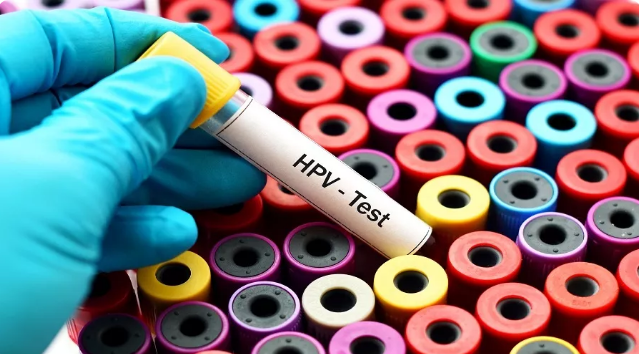Hello everyone, I am Zou Shien, and I have been a male obstetrician and gynecologist for 15 years.
In the past 15 years, the contrast between gender and occupation has often been used by friends. Most of the female friends keep in touch, with an obstetrician and gynecologist as a friend, regardless of his men and women. Male friends are often the envy that cannot be concealed, and then various conjectures, some of which really make people don’t want to take a reason.
In fact, in front of doctors, patients are just patients. I only care about how to cure patients. I also hope that everyone can eliminate the prejudice against male doctors in obstetrics and gynecology.
Today, I mainly want to talk about the concern of many female friends: HPV.

Miss Sun is 26 years old and has been married for more than a year. Recently, she began to suffer. The original couple began to prepare for pregnancy and went to the hospital for a pre-pregnancy examination. The results showed that HPV 52 was positive.
Do you want cervical cancer? Is it necessary to turn negative before pregnancy? Will pregnancy affect the baby? … …
Miss Sun came to Ngor’s clinic with a lot of questions. Ngor smiled and listened to me:
We all know that the persistent infection of high-risk human papillomavirus HPV is the main cause of cervical cancer, and also causes vaginal cancer, vulvar cancer, perianal cancer and male penis cancer.
What should I do if HPV infection is detected during pregnancy preparation? Treatment or pregnancy first?
Many obstetricians and gynecologists are also a little confused. Don’t panic, these 11 knowledge points need to be remembered:
HPV infection is very common. About 80% of women have been infected with high-risk HPV in their lifetime. However, more than 90% of infected people can turn negative within about one year.
Low-risk HPV can cause warts in reproductive tract and is not carcinogenic. Only persistent infection of high-risk HPV can cause cancer. However, even if high-risk HPV continues to be infected, only a small proportion may become cervical cancer or precancerous lesions, and the vast majority are at peace.
There is no specific drug to remove HPV, so it is better to expect interferon and the like to treat negative change. It is better to exercise well and enhance your immunity.
HPV infection will not enter the blood system (therefore, natural infection of HPV will not produce sufficient protective antibodies) and will not affect fetal development.
However, HPV may directly infect the uterine cavity. At present, a small number of population studies show that the infection rate of HPV in cervix and placenta of spontaneous abortion or premature delivery is higher than that of normal pregnant women, but it cannot be directly determined that HPV will increase the risk of spontaneous abortion or premature delivery.

In short, if HPV is tested positive, pregnancy preparation can be carried out normally as long as it is determined that there are no cervical precancerous lesions and cancers.
How to determine whether there is canceration or precancerous lesion of cervix? You need to go to the hospital, do HPV test and TCT test to make a comprehensive judgment, and do colposcopy biopsy and cervical conization when necessary.
Before pregnancy, precancerous lesions, including cervical intraepithelial neoplasia grade 2-3 (CIN grade 2-3)/high-grade squamous intraepithelial lesion (HSIL), or cancer, are recommended for active treatment. Because no one knows how long it will take you to successfully conceive.
If HPV is found to be positive during pregnancy, as long as it is clear that it is not cervical cancer, it does not need to be treated until postpartum. Because even if there is precancerous lesion, it is not cancer, and postpartum treatment is completely in time. Ps: Cervical conization and cervical curettage are forbidden during pregnancy.
HPV positive, whether natural delivery or cesarean section, the baby may be infected with HPV due to contact with contaminated birth canal and amniotic fluid at birth. The risk of natural delivery is greater.
If low-risk HPV causes condyloma acuminatum in the birth canal, the risk of baby infection caused by natural labor is too high, cesarean section is recommended.
However, because normal delivery is generally better than cesarean section, the American Association of Obstetricians and Gynecologists recommends that cesarean section is not necessary because of HPV infection. Because cesarean section cannot completely avoid baby infection, and even if the baby is infected with HPV, the vast majority will be eliminated within 2 years.
